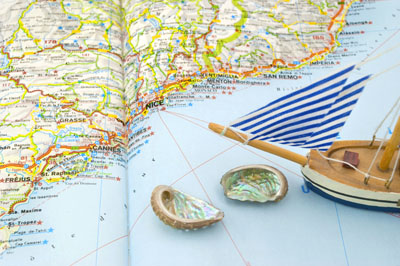One mistake that beginning photographers often make is they feel they have to travel to exotic locations to take good pictures. Wrong. Most of the stock photos I take are done either at home, or within in a few miles of where I live. Many of them are done in 'down time' when I'm waiting for example a bus, an appointment or meeting a friend.

Shoot Where you Live
Don't lose sight of the fact that your local town is an interesting and remote location to someone at the other side of the world. Because I live in Australia I see small American towns as fascinating places full of interesting signs and shutter board buildings - full of photographic opportunities; yet I find it easy to overlook photo opportunities in my own town because I see them every day. You might think that you live in an ugly industrial town or a quiet village with no interest whatsoever but you are probably losing sight of some great photo opportunities.
If you thinking about photographing locally try to shoot in both a documentary/editorial way and also a stock photo style. A documentary style would include something like the local fire station with a sign (identifying it as your local station), where as a stock style photo would depict just the fire engine coming out of the station with lights on (such a shot could be taken anywhere) Both photos serve different purposes, but one is likely to be accepted and sell better as microstock.
Some local features such as landmark monuments and street scenes or festivals with people can only be sold editorial photos and not as standard microstock (royalty free). Several microstock agencies allow the sales of editorial photos and there is a large market looking for such images. Just because people are present and you can't get them all to sign a model release should not stop you taking a photo; it will still have a market somewhere.
It doesn't take long to think of a list of local photo subjects:
- Local Landmarks: monuments, parks, churches and towers
- Signs: Main street signs and entrance to town 'population signs'
- Infrastructure: hospital, police station, fire station, schools and colleges
- Public services: town hall, community centre or community hall
- River or lake scenes,
- Local industry, factories, and shops
- Markets and annual fairs and festivals.
- Speciality local food and produce
- Local farming, forestry or wine making etc.
Aim to shoot the most famous and recognisable locations in the local area first, these are likely to be the best selling images - in some cases it's a sign at the entrance to town. Other more obscure locations have a limited more specialist market.
Local history, memorials, birth places and graves; even if the person was only a relatively small historical figure someone somewhere will be looking for a photo to illustrate an article about them at some point in time.
Seasonal Changes; don't forget to shoot iconic local images in autumn, spring, summer and in the snow. Also think about capturing mist, fog or storms. Someone will need to illustrate an article about 'a wet weekend in Springfield' but many stock images tend to be 'pretty summer days'.
Don't become obsessed or burdened by taking perfect photos of everything in your local town, this article is a reminder not to overlook that they are there. You can shoot local pictures any time you have some spare time or a few minutes on the way somewhere. Often such photos local come out of good luck when you are passing by somewhere and see that the light is good.
Your Local Image Collection
A lot of the ideas that I've suggested here are similar to those you might shoot as a travel photographer. Building a good portfolio of local images is something that all photographers do. Local photos can provide a great source of income through sales of prints to local people and publications. Framed local photos make great gifts for friends especially if you know that a certain place has a special meaning to them; and such photos may open up a networking or sales opportunity with anyone who might see them. (Getting your work seen is important if you want to do more than just microstock)
If you tell anyone in your community you are a photographer they will expect to see images of their hometown which will make them say 'wow' - it's because their hometown is special to them.
Related Posts
Microstock styles vs traditional stock photos



Do historical sites and
Dave B. (not verified) on Fri, 2010-01-08 19:39RE historical sites
Steve Gibson on Sat, 2010-01-09 02:22I often shoot in my backyard.
Cybertrone (not verified) on Tue, 2011-05-03 00:52